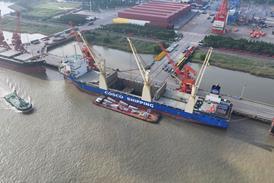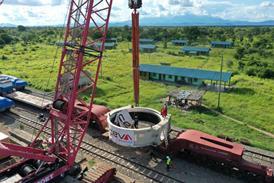The potential of floating offshore wind energy is massive, and the technology behind the industry continues to develop. Equinor has designed a new floating wind concept that will enable industrial standardisation and maximise opportunities for local supply chains.

The offshore energy company has revealed its preferred floating wind foundation design for full-scale commercial floating offshore wind projects, if successful in its bid issued in the ScotWind leasing round. The Wind Semi – a semi submersible wind turbine foundation – has been designed with flexibility, specifically to allow for fabrication and assembly based on local supply chain capabilities.
“We are ready to develop the next generation, large-scale commercial floating offshore wind in Scotland. By leveraging our 20 years of floating offshore wind experience and innovations, we plan to develop gigawatt-size floating projects in one single phase,” said Sonja C. Indrebø, Equinor’s vice president of floating offshore wind.
“Implementing large-scale projects will accelerate Scotland’s energy transition to net zero. At 1 GW, this project would be over 30 times bigger than Hywind Scotland, the UK’s and Equinor’s first floating project, and have the potential to not only position Scotland as a leader in deep water technology, but also create opportunities for both existing suppliers and new entrants to the offshore wind sector.”
Equinor said the Wind Semi has several features that makes it well suited to harsh waters, while maximising the opportunities for the Scottish supply chain:
- Increased dependability: By introducing a passive ballast system, the Wind Semi has a simple substructure design, reducing the risk of system failure and the amount of maintenance needed
- Simpler, more robust design: A flat plate design that is free from bracings, heave plates and complicated nodes that are prone to fatigue cracking
- Flexibility towards the supply chain: With a harbour draught of less than 10 m, the Wind Semi’s turbine integration can be assembled at most industrialised ports. The Wind Semi’s simpler flat plate design enables the substructure to be built in blocks that can either be fabricated locally and/or shipped from other locations.
















